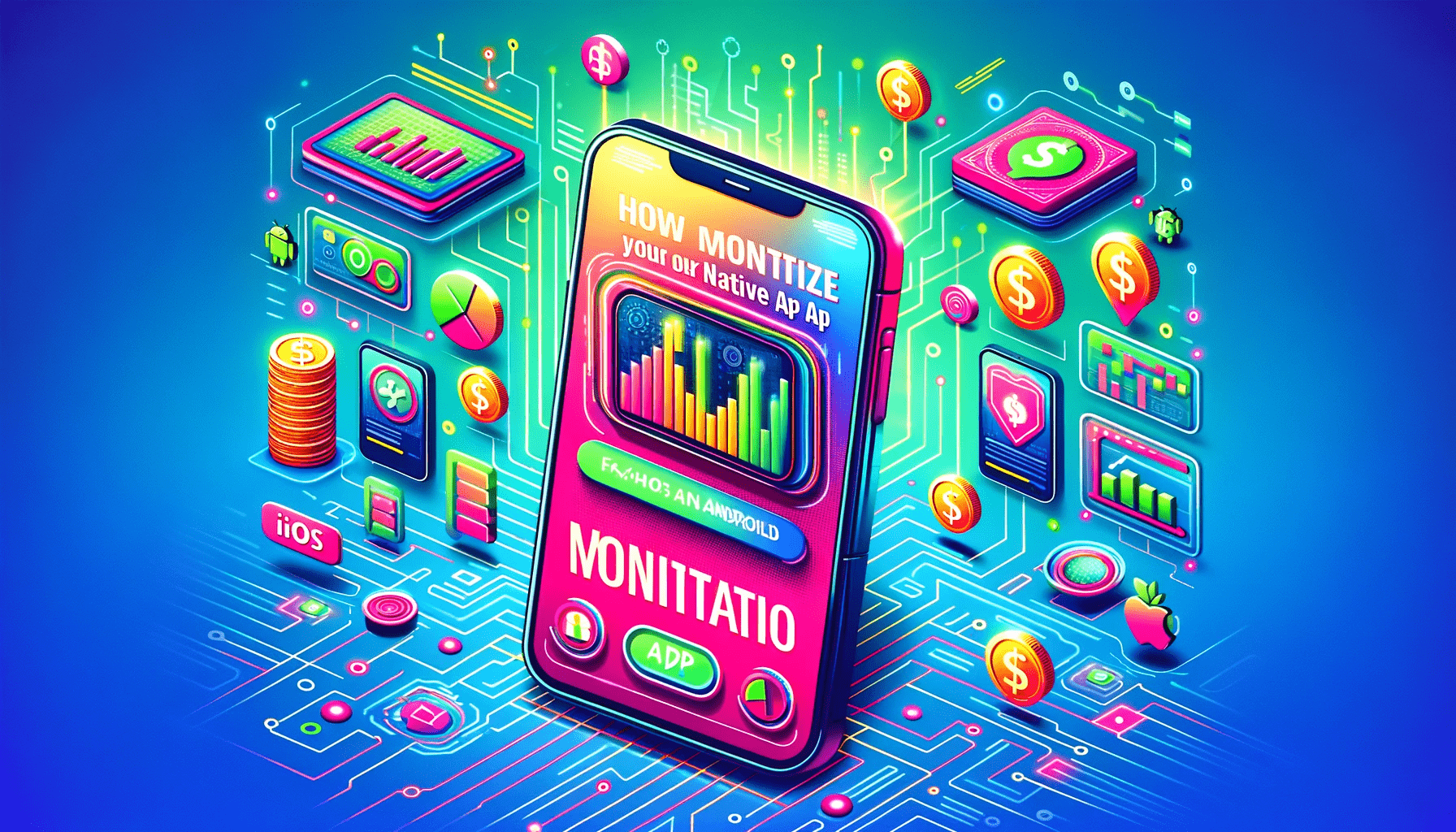In the fast-paced world of mobile technology, native apps for iOS and Android have become an indispensable part of our daily lives. From social media platforms to e-commerce solutions and productivity tools, these apps cater to various needs and preferences of users worldwide. But have you ever wondered how app developers make money from these apps? The answer lies in effective app monetization strategies.
In this comprehensive guide, we’ll explore how to monetize your native app for iOS and Android, and why it’s crucial for businesses looking to thrive in the digital age. Whether you’re a seasoned developer or just starting your journey in the world of app development, this blog is packed with insights to help you generate revenue from your mobile applications. Additionally, if you’re looking for a native app development company to build a robust app, we’ve got you covered!
Native App Development: Building the Foundation
Before delving into the monetization strategies, it’s crucial to emphasize the importance of starting with a strong foundation. Native app development services play a pivotal role in creating high-quality, user-friendly apps that are more likely to succeed in the competitive app market.
Native apps are specifically designed for a particular operating system, such as iOS or Android. They offer superior performance, access to device-specific features, and a more intuitive user experience. Investing in professional native app development services ensures that your app is optimized for the chosen platform, making it easier to monetize in the long run.
Freemium Model
The freemium model is one of the most popular monetization strategies for native apps. It involves offering a basic version of your app for free, with the option for users to purchase premium features, and content, or remove advertisements through in-app purchases. This approach allows you to attract a broader user base while generating revenue from those willing to pay for enhanced functionality.
In-App Advertising
Incorporating ads into your native app can be a lucrative way to monetize it. You can partner with ad networks like Google AdMob or Facebook Audience Network to display relevant ads to your users. It’s essential to strike a balance between ads and user experience to avoid frustrating users with excessive interruptions. Implementing native ads that seamlessly blend with your app’s content is a user-friendly approach.
Subscription Model
The subscription model is particularly effective for apps that offer premium content, services, or ongoing updates. Users pay a recurring fee, typically on a monthly or yearly basis, to access exclusive features or receive regular updates. This model can provide a steady stream of income and encourage long-term user engagement.
In-App Purchases
In-app purchases allow users to buy virtual goods, additional levels, or other digital content within your app. Games often leverage this model by offering power-ups, cosmetics, or virtual currency for purchase. It’s essential to provide value and ensure a smooth purchasing process to maximize revenue from in-app purchases.
Sponsorships and Partnerships
Collaborating with other businesses or brands can be a mutually beneficial monetization strategy. You can integrate sponsored content, promotions, or partnerships within your app. Ensure that these collaborations align with your app’s target audience and add value to the user experience.
Affiliate Marketing
If your app focuses on a specific niche or industry, consider implementing affiliate marketing. You can promote relevant products or services within your app and earn a commission for every sale generated through your referral links. This approach can work well for content-driven apps or those with a strong user base.
Data Monetization
Collecting user data (with proper consent and privacy measures) can be a valuable asset. You can anonymize and aggregate this data to gain insights into user behavior and preferences. This information can then be sold or used to improve your app’s functionality and user experience.
Crowdfunding
Crowdfunding platforms like Kickstarter and Indiegogo can help you raise initial funds for your app project. By offering exclusive rewards or early access to supporters, you can generate interest and financial support before your app even launches.
How it Can Help Businesses
Monetizing your native app can significantly benefit businesses in various ways:
-
Revenue Generation: Monetizing your app provides a direct source of income, which can be used to fund further development, marketing efforts, and business expansion.
-
Brand Awareness: Successful apps can enhance brand recognition and credibility, leading to increased trust among customers.
-
Customer Engagement: Monetized apps often have a more engaged user base, as users are invested in the app’s content or features they’ve paid for.
-
Data Insights: Collecting user data for monetization purposes can provide valuable insights into customer behavior and preferences, helping businesses make informed decisions.
-
Competitive Advantage: Implementing effective monetization strategies can set your app apart from competitors and attract more users.
-
Long-Term Sustainability: A well-monetized app can provide a steady income stream, contributing to the long-term sustainability of your business.
Wrapping Up
In the competitive world of mobile apps, finding effective ways to monetize your native app for iOS and Android is essential. Native app development services provide a strong foundation for creating high-quality apps, but monetization strategies are equally crucial for long-term success.
From the freemium model and in-app advertising to subscriptions and affiliate marketing, there are numerous monetization options to explore. The key is to choose the strategies that align with your app’s goals and target audience while ensuring a positive user experience.

